Last night I attempted to replace a toilet. Upon removal, I saw that the flange was broken and previously repaired with this red steel thing. Unfortunately you can tell this wasn't sealing very well and the replacement ring and screws were pretty rusted.
I decided to remove all that stuff and replace the flange. I didnt glue down the flange yet because the lip of the new flange only inserts into the pipe less than 1/4 inch. I'm going to try to find one a little longer that will slide in there.
Question: The concrete surrounding where the flange sits has been chipped away/has a void. This was pretty gunked up with crap (I don't think it was actual crap) because of the broken flange. I think the new one wont have any issue but maybe in 20 years if that thing breaks again there is the opportunity for issues. I was thinking of inserting a pipe into the hole coated with Vaseline. Then pouring some self leveling quikrete around the pipe to fill that void, then removing the PVC pipe and reattach the new flange.
What do you think?
Toilet removed:
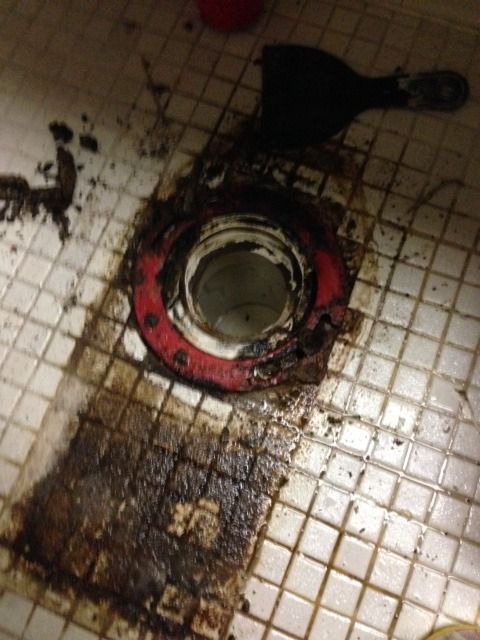
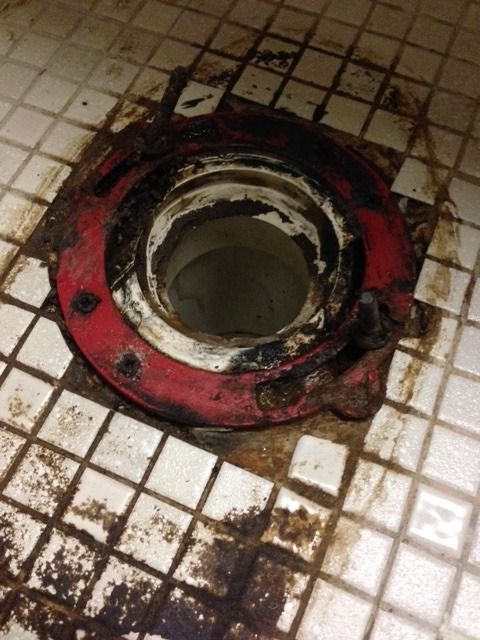
Old flange removed/cleaned up. You can see the void in the concrete:
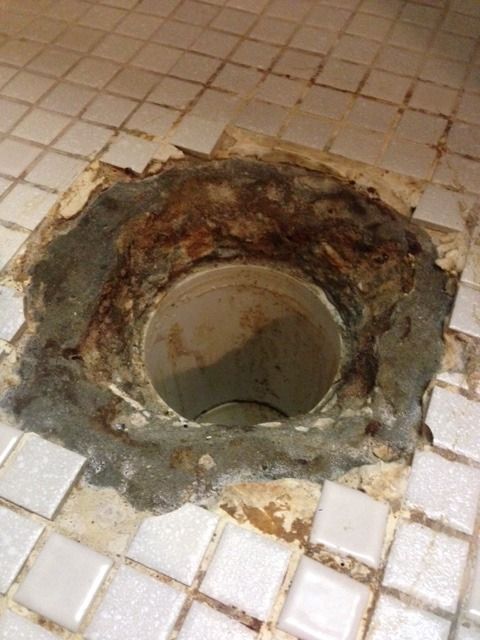
Temporary flange, I'm going to try to find one that's a little deeper.
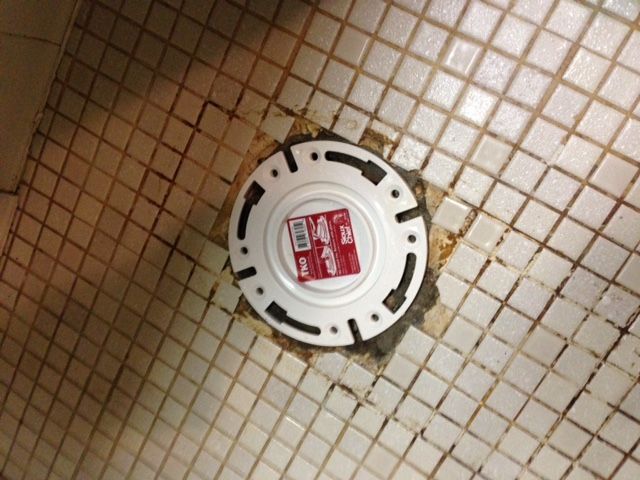
Whatever you do, get a steel/stainless steel flange and shim it right. Those ABS ones are sucky!
I am thinkin you are going to have to chip out and repour some concrete in there. There are some longer/extension toilet flanges out there you can drum up that slip down inside the existing pipe
Your comment on shimming has me googling...am I shimming just to have the flange level or what?
Should the flange sit on the concrete or on the tile? It previously sat on the concrete but there seems to be some controversy on whether or not that's correct. Next year this bathroom will be getting new tile so I figured we would remove the toilet, remove all the tile and retile. Not sure if that's correct or not.
If it sits on the tile you use a standard wax ring. If it sits on the concrete you need to account for that difference with a thicker ring. My wife's grandfather had some significant issues because his tile guy didn't pay attention to that. You could do it either way but it seems like setting it on the cement would future proof things a bit more than having to deal with the old tile in the future. I would also fill the void.
While everyone uses a flange and attaches the toilet to it, that's not the only way to go. You can also run studs/bolts into the concrete in the right location in the flange and attach the toilet that way. Then the flange just sits there with nothing tugging on it to break it or break it free.
Wax seals work great, but sometimes the skinned foam ones work even better.
they make repair flanges specifically for this, they have a longer stub with plastic/rubber fins that goes down inside your pipe and seals that way.
i've used them in a very similar case to yours and packed hydraulic cement around them with toilet bolts down into the cement so the hydraulic cement locked everything in place. you don't need a metal flange unless you're using the toilet bolts to hold the toilet to it. if you put the bolts or studs down into the floor and just use the flange as a means to make the wax ring seal the toilet to the pipe, you'll be fine with plastic.
there are more ways to fix it, but make sure you get the stub off your flange down in that pipe and make sure it seals to it. i recently dug up the basement floor of my rental house and found the plumber that did some repair work figured butting pvc pipes against each other and pouring some concrete around them would seal. no wonder roots were growing up through the floor drain.

The last time my toilet was out I swapped the wax ring for the rubber ring style. That is the bees knees! So much easier to install and maybe a $1 or 2 cost penalty.
+1 on the repair flange with the gasket. Flange is suppose to sit on top of the floor. Often you will find them flush or slightly under the floor level because someone added a floor. This is not a good thing. You want the flange as close to the bottom of the toilet as possible in order for the wax seal to be as thin as possible. You can fill in the void with mortar mix. Just make sure you use something that the next guy can chisel out if need be. Make sure you have the openings for the johnny bolts oriented the right way if you opt for a glue in flange. I'm not a fan of the all plastic flanges. They break if you overtighten the johnny bolts. The stainless rings are the way to go. Remember the flange gets attached to the structure. The toilet gets attached to the flange.
Here's the update:
Concrete poured:
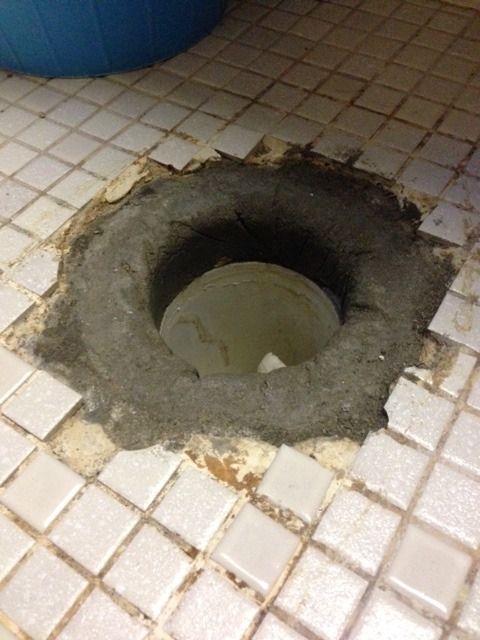
Unfortunately the only stainless steel flanges I can find are the standard size which just barely (less than 1/4") fits into the PVC below. I think I am going to have to use the flange shown to the right which is all PVC. Hopefully securing it to the slab with tapcon screws provides enough strength not to snap the flange. I'll be sure not to over tighten.
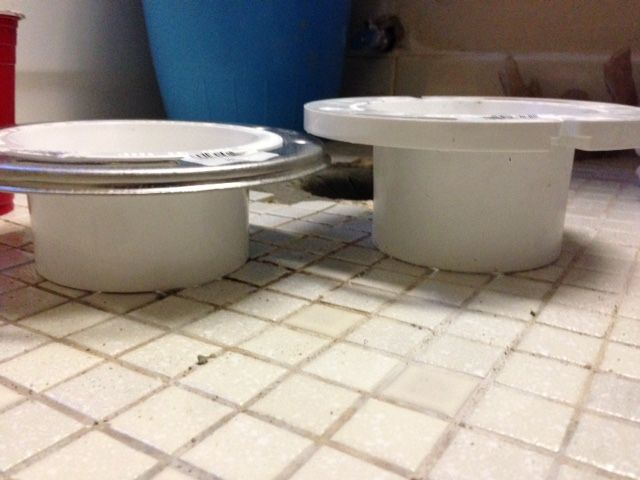
Tonight I'll glue the flange down and screw it in. Tomorrow...new toilet!
judging by the brand you're shopping home depot, they'll have the repair flanges with the rubber gasket and the longer stub. way less margin for error than trying to glue one in there, but it's your house so feel free to use whichever one you're comfortable with.
your tapcons are more than likely to explode your repair, so get longer ones and drill your tapcon size holes, then use a larger bit to drill through your repair to the original pad so the screws can pass through cleanly to the cured old concrete.
Good idea....back to big blue I go!
Are you saying the repair flange has less room for error? The PVC one I bought that attaches to the pipe with PVC glue seems pretty straight forward and something I'm willing to deal with. Of course, the gasket that just sits in there seems easy but I feel like the PVC glue would be better longterm.
You'll need to log in to post.